Complete Solutions to Conceptual MCQs Single Option Correct of chapter GEOMETRICAL OPTICS of Class 12 book with complete answers and questions
| Class 12 | PHYSICS |
| Chapter | GEOMETRICAL OPTICS |
| PHYSICS GALAXY | Conceptual MCQs Single Option Correct |
| Number Of Questions | 43 |
| Academic Year | 2023-24 |
A beaker containing liquid is placed on a table, underneath a microscope which can be moved along a vertical scale. The microscope is focused, through the liquid onto a mark on the table when the reading on the scale is `a`. It is next focused on the upper surface of the liquid and the reading is `b`. More liquid is added and the observations are repeated, the corresponding readings are `c` and `d`. The refractive index of the liquid is
02:38View SolutionAn insect of negligible mass is sitting on a block of mass M, tied with a spring of force constant K. The block performs simple harmonic motion with amplitude A infront of a plane mirror placed as shown. The maximum speed of insect relative to its image will be
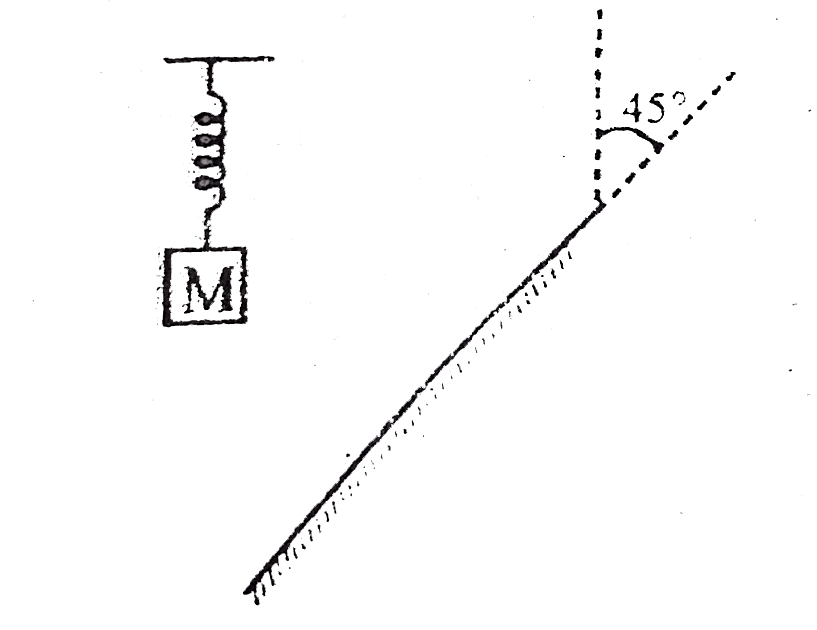 03:16View Solution
03:16View SolutionInside a solid glass sphere of radius `R`, a point source of light lies at a distance `x(xltR)` from centre of the sphere. The solid is surrounded by air of refractive index 1. The maximum angle of incidence for rays incident on the spherical glass air interface directly from the point soure is:
01:07View SolutionTwo plane mirrors of length L are separated by distance L and a man `M_(2)` is standing at distance L from the connecting line of mirrors as shown in figure. A man `M_(1)` , is walking in a straight line at distance 2 L parallel to mirrors at speed u,then man at O will be able to see image of `M_(1)` ,for total time:
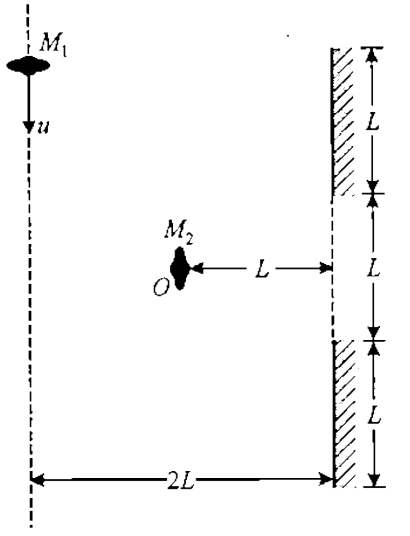 03:38View Solution
03:38View SolutionA point source has been placed as shown in the figure-. What is the length on the screen that will receive reflected light from the mirror ?
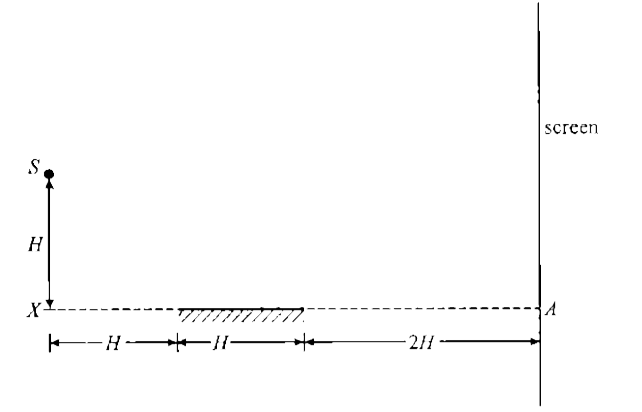 02:19View Solution
02:19View SolutionA thin lens focal length `f_(1)` and its aperture has diameter `d`. It forms an image of intensity `I`. Now the central part of the aperture up to diameter`(d)/(2)` is blocked by an opaque paper. The focal length and image intensity will change to
03:50View SolutionA ray of light falls on a plane mirror. When the mirror is turned, about an axis at right angles to the plane of mirror by `20^(@)` the angle between the incident ray and new reflected ray is `45^(@)`. The angle between the incident ray and original reflected ray was therefore.
05:19View SolutionIn the diagram shown, light is incident on the interface between media `1` (refractive index `n_(1)`) and `2` (refractive index `n_(2)`) at angle slightly greater than the critical angle, and is totally reflected. The light is then also totally reflected at the interface between media `1` and `3` (refractive index `n_(3)`), after which it travels in a direction opposite to its initial direction, The media must have a refractive indices such that.
 .03:42View Solution
.03:42View SolutionThe observer 'O' sees the distance `AB` as infinitely large. If refractive index of liquid is `mu_(1)` and that of glass is `mu_(2)`, then `(mu_(1))/(mu_(2))` is :
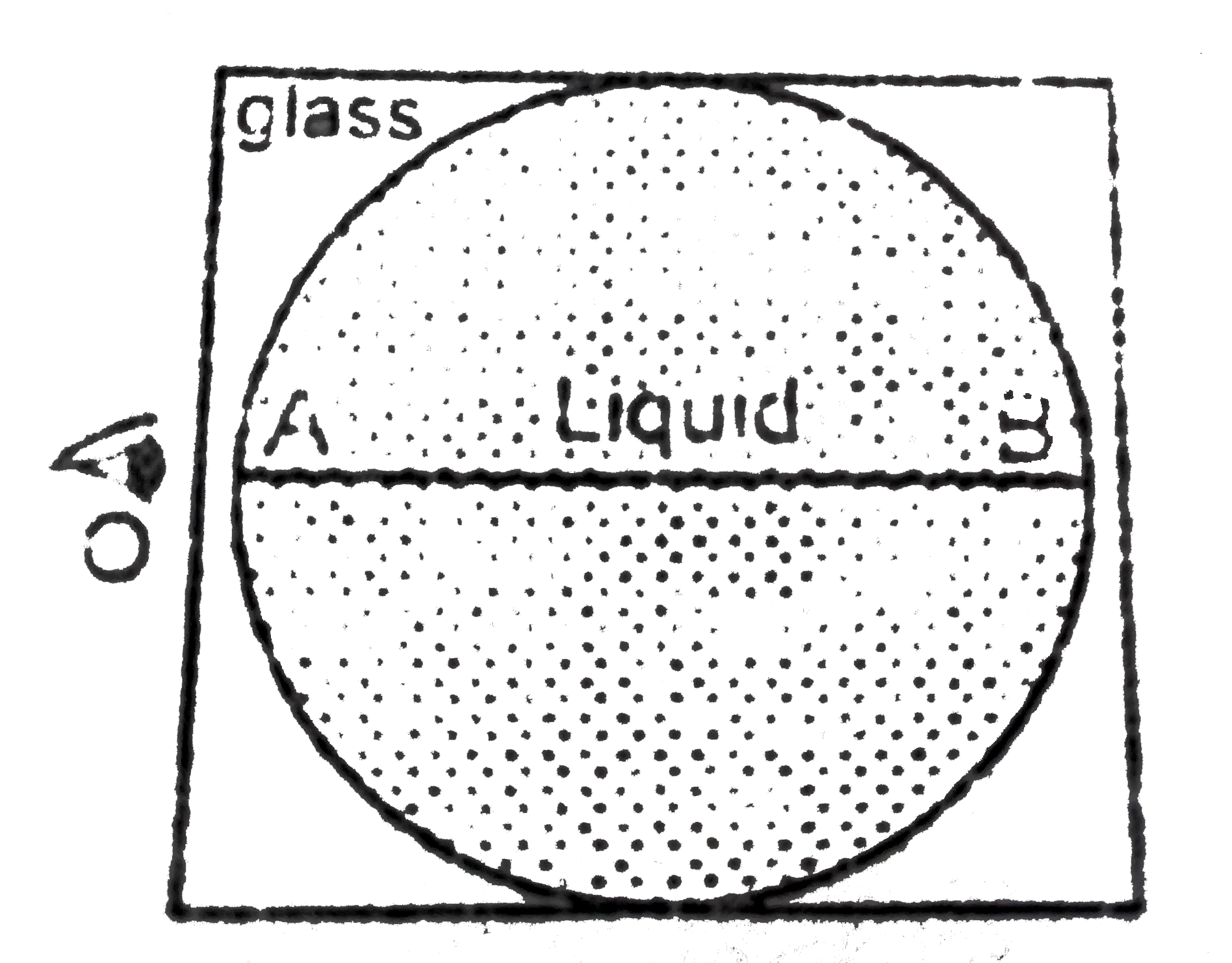 .02:18View Solution
.02:18View SolutionAn infinitely long reactangular strip is placed on principal axis of a concave mirror as shown in figure. One end of the strip coincides with centre of curvature as shown. The hright of rectangular strip is very small in comparison to focal length of the mirror. Then the shape of image of strip formed by concave mirror is
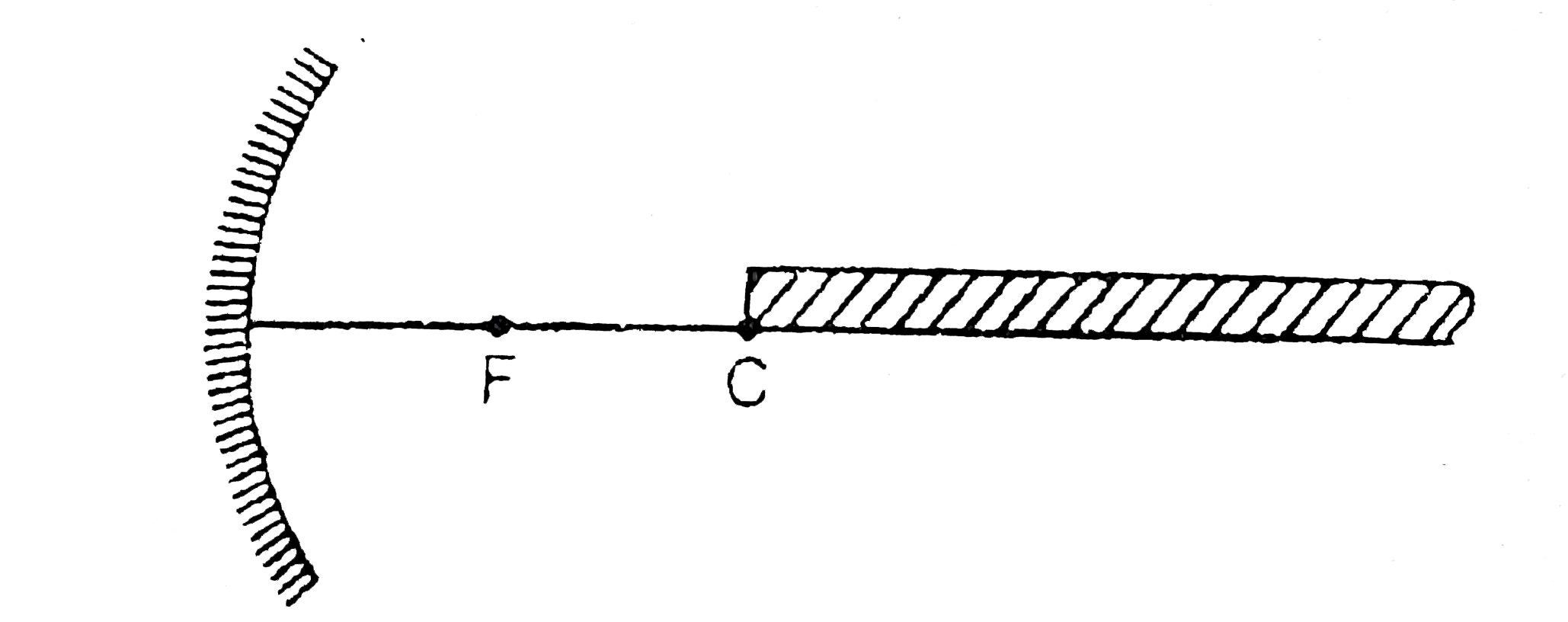 .02:11View Solution
.02:11View SolutionA concave spherical surface of radius of curvature `10 cm` separates two mediums `X` and `Y` of refractive indices `4//3` and `3//2` respectively. Centre of curvature of the surfaces lies in the medium `X`. An object is placed in medium `X`.
05:13View SolutionIn the figure. shown- a slab of refractive index `(3)/(2)` is movedat speed 1m/s towards a stationary observer. A point 'P' is observed by the observer with the help of paraxial rays through the slab. Both 'O' and observer lie in air. The velocity with which the image will moveis:
 01:01View Solution
01:01View SolutionLight passes from air into flint glass with index of refraction n. The angle of incidence must the light have forthe component of its velocity perpendicular to the interface to remain same in both mediums is:
04:01View SolutionIn the figure shown If the object`O` moves towards the palne mirror ,then the image I(which is formed after successive reflections from `M_(1),M_(2)`respectively will move:
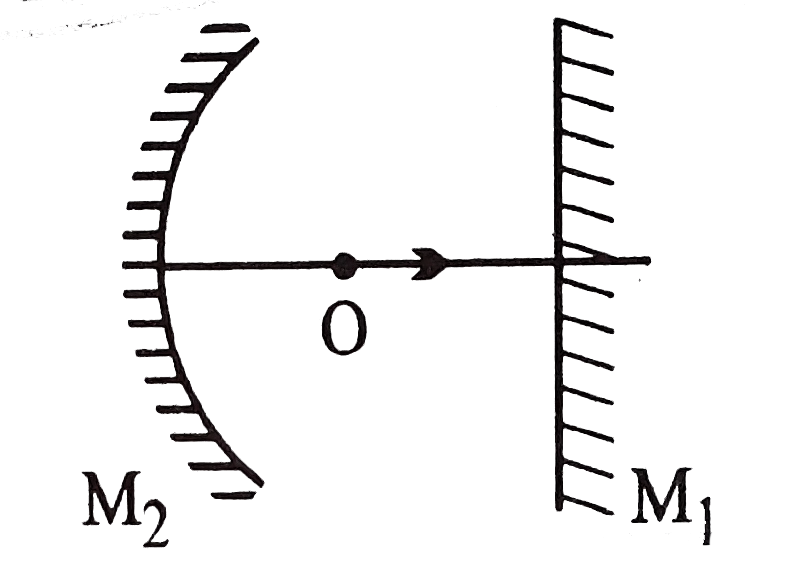 02:21View Solution
02:21View SolutionA person AB of height 170 cm is standing in front of a plane mirror. His eyes are at height 164 cm. At what distance from P should a hole be made in mirror so that he cannot see his hair?
 02:19View Solution
02:19View SolutionIn the figure shown, blocks `P` and `Q` are in contact but do not stick to each other. The lower face of `P` behaves as a plane mirror. The springs are in their natural lengths. The system is released from rest. Then the distance between `P` and `Q` when `Q` is at the lowest point first time will be
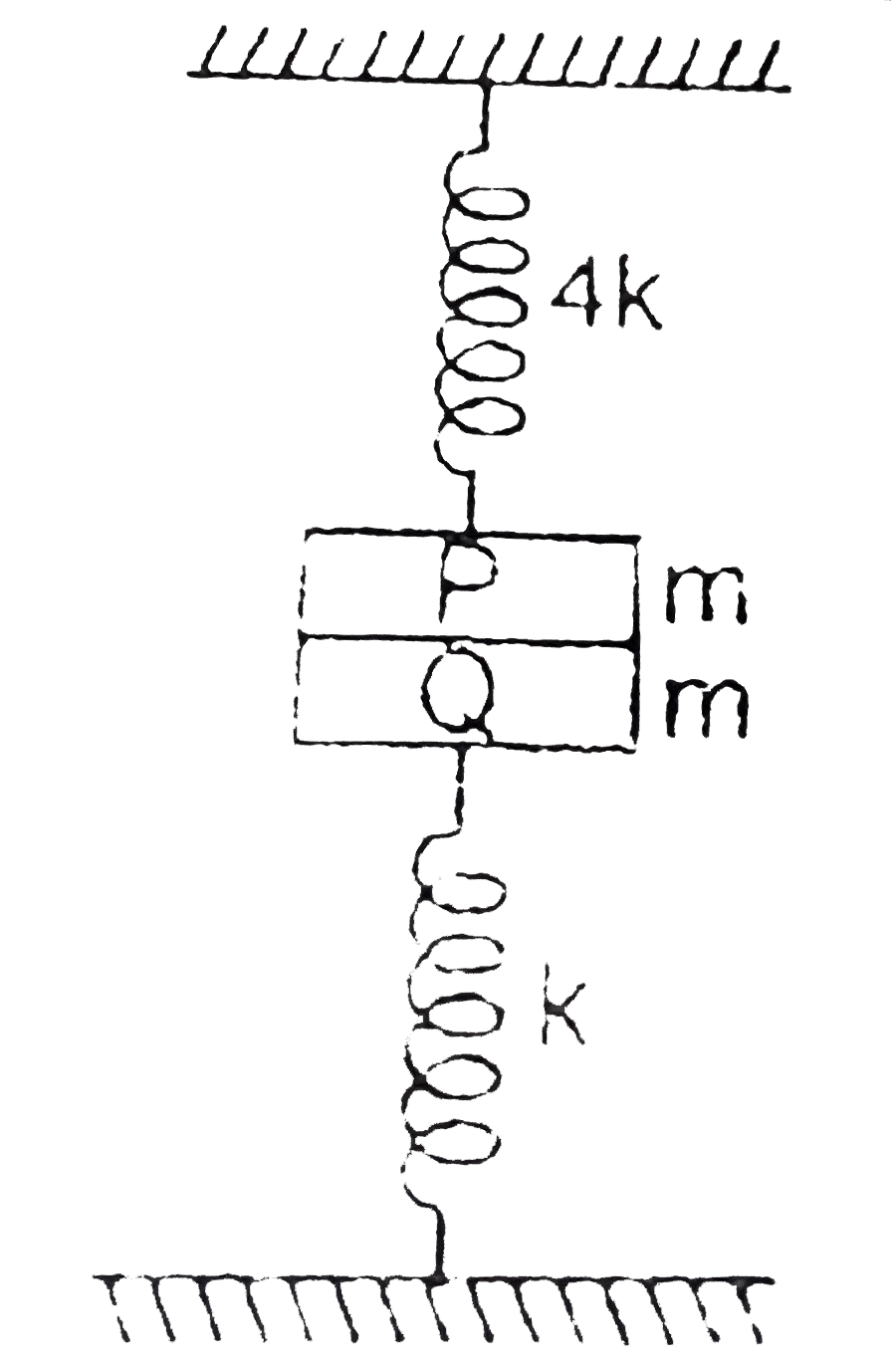 03:15View Solution
03:15View SolutionA point object is moving along principal axis of concave mirror with uniform velocity towards pole. Initially the object is at infinite distance from pole right side of the mirror as shown. Before the object collides with mirror, the number of times a which the distance between object and its image is `40 cm` are.
 .02:07View Solution
.02:07View SolutionIn the figure shown-, the maximum number of reflections light rays will undergo are:
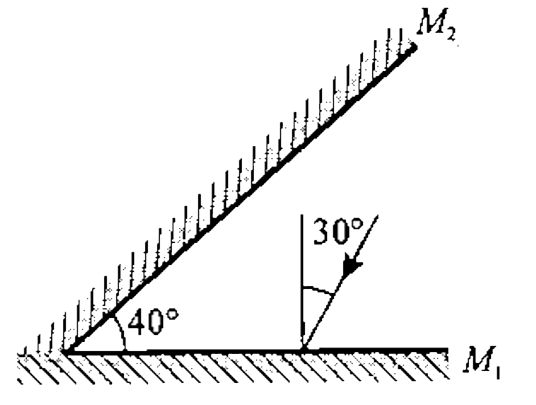 01:47View Solution
01:47View SolutionA convex lens is cut into twoparts in different ways that arearranged in four manners, as shown. Which arrangement will give maximum optical power?
04:47View SolutionA parallel beam of light passes parallel to the principal axis and falls on one face of a thin convex lens offocal length f and after two internal reflections from the second face forms a real image. The distance of image from lens if the reflactive index of material of lens is `1.5` :
09:18View SolutionAn object and a plane mirror are shown in figure. Mirror is moved with velocity `V` as shown. The velocity of image is :
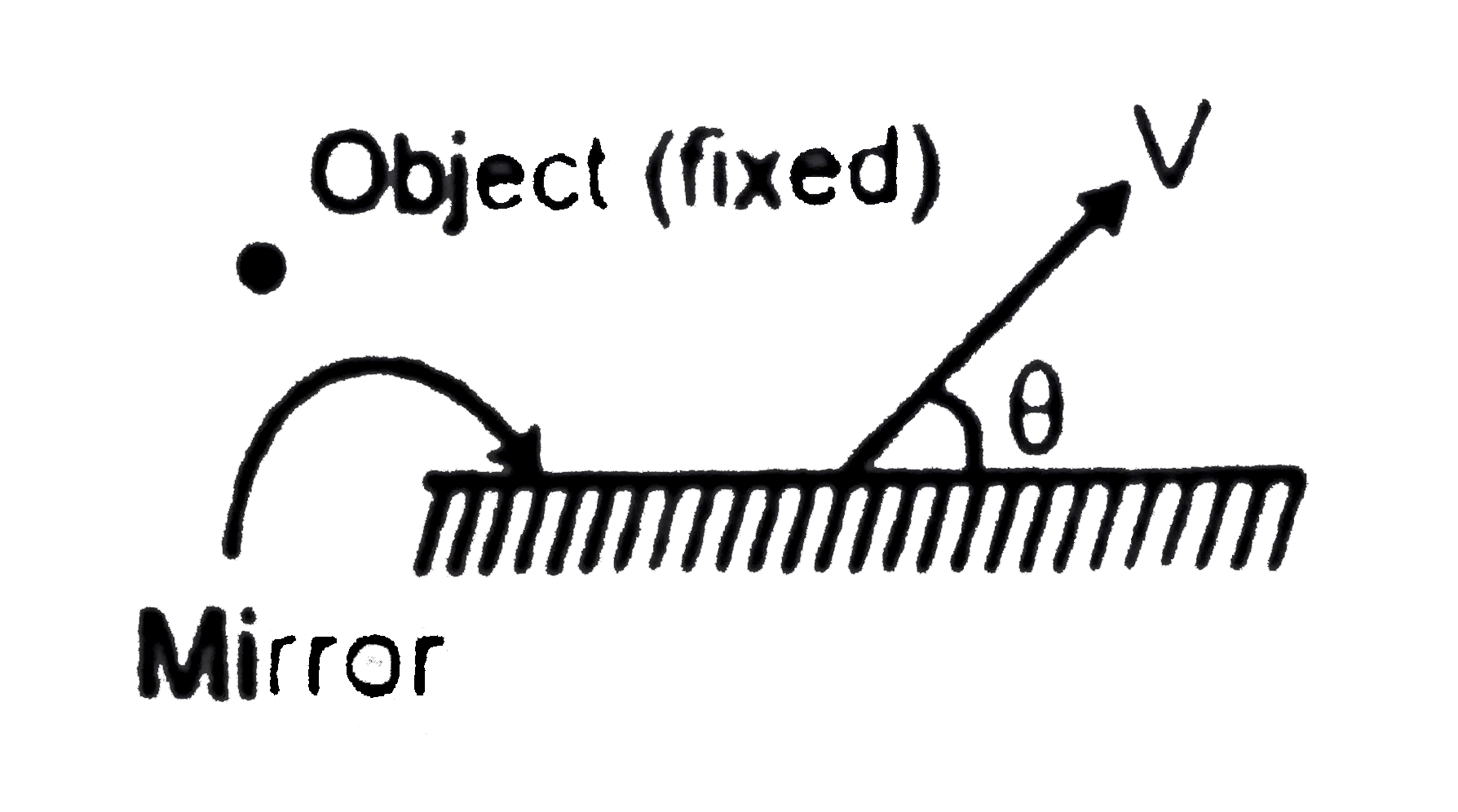 .02:31View Solution
.02:31View SolutionA prism of angle A and refractive index 2 is surrounded by medium of refractive index `sqrt3` . A ray is incident on side PQ at an angle of incidence `i (0leile90^(@))` as shown in the figure-. The refracted ray is then incident on side PR of prism. The minimum angle A of prism for which ray incident on side PQ does not emerge out of prism from side PR (for any value of i) is:
 03:14View Solution
03:14View SolutionTwo plane mirrors are joined together as shown. Two point objects A and B are placed symmetrically such that `OA = OB = d. [AOB` is a straight line]
(a) If the images of A and B coincide find `theta` (call it `theta_(0))`.
(b) Keeping the position of objects unchanged the angle between the two mirrors is increased to `theta = (4)/(3) theta_(0)`. Now find the distance between the images of A and B.
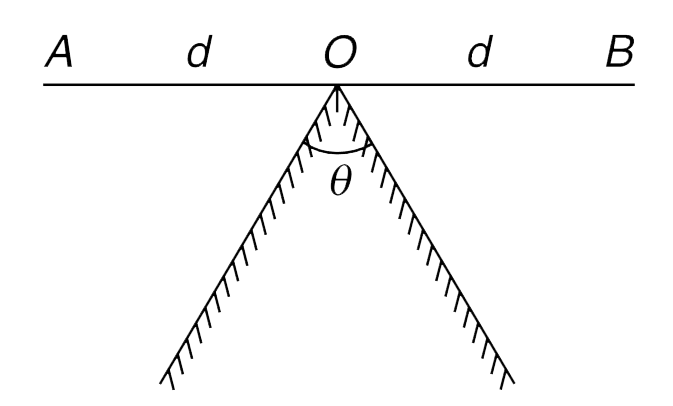 03:45View Solution
03:45View SolutionThe position of a real point object and its point image are as shown in the figure-. AB is the principal axis. This can be achieved by using :
 02:22View Solution
02:22View SolutionThe image of the moon is produced bya convex lens of focal length f. The area of image is directly proportional to:
04:08View SolutionA converging lens of focal length `20cm`and diameter`5cm`is cut along the line`AB`.The part of the lens shown shaded in the diagram is now used to form an image of a point `P`placed `30cm`away from it on the line`XY`.Which id perpendicualr to the plane of the lens.The image of`P`will be formed.
 02:36View Solution
02:36View SolutionA man stands on a glass slab of height h and inside an elevator accelerated upwards with 'a'. `mu_(g)` If is refractive index of glass then the bottom of the slab appears to have shifted with respect to the man by a distance ,
02:45View SolutionWhen an object is at a distance `u_(1)` and `u_(2)` from the optical centre of a lens, a real and virtual image are formed respectively, with the same magnification.The focal length of lens is:
05:18View SolutionA liquid of refractive index `1.33` is placed between two identical plano-convex lenses, with refractive index `1.50`. Two possible arrangement P and Q are shown in figure-. The system is:
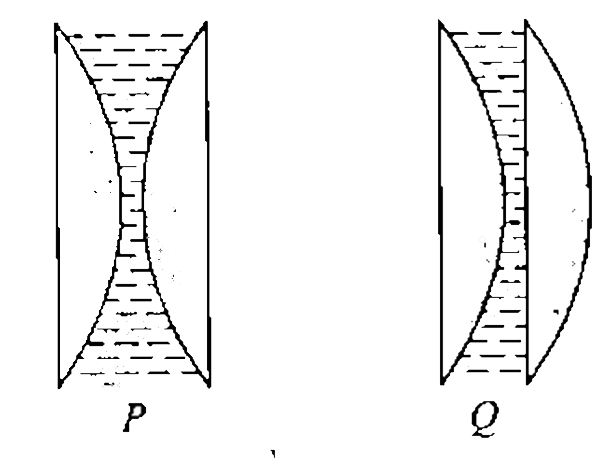 04:13View Solution
04:13View SolutionTwo particles A & B of mass `m_(1)` and `m_(2)` respectively start moving from O with speeds `v_(1)`, and `v_(2)`. A moves towards the plane mirror and B moves parallel to mirror horizontally. The mirror is in y-z plane. The absolute-speed of image of centre of mass of the system (image of A + image of B)is:
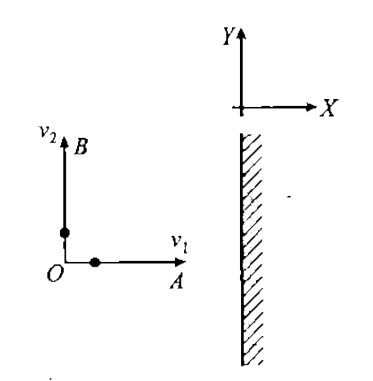 03:41View Solution
03:41View SolutionA mango tree is at the bank of a river and one of the branch of tree extends over the river. A tortoise lives in the river. A mango falls just ono the tortoise. The acceleration of the mango falling from tree as it appears to the tortoise is (refractive index of water is `4//3` and the tortoise is stationary)
01:28View SolutionA plane mirror having a mass m is tied to the free end of a mass less spring of spring constant k. The other end of the spring is attached to a wall. The spring with the mirror held vertically to the floor on which it can slide smoothly. When the spring is at its natural length, the mirror is found to be moving at a speed of v cm/s. The separation between the images of a man standing before the mirror, when the mirror is in its extreme positions:
 01:27View Solution
01:27View SolutionAn observer can see through a pin-hole the top end of a thin rod of height h, placed as shown in the figure. The beaker height is 3h and its radius h. When the beaker is filled with a liquid up to a height 2h, he can see the lower end of the rod. Then the refractive index of the liquid is
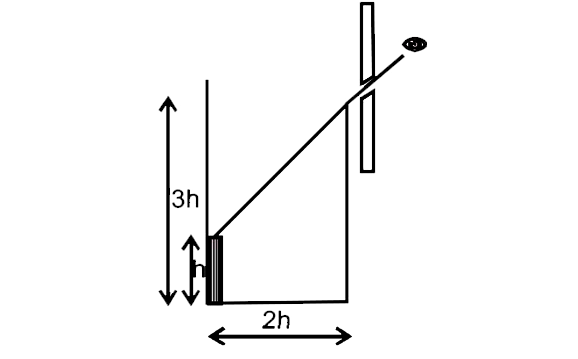 06:39View Solution
06:39View SolutionA ray of light is incident on the left vertical face of glass cube of refractive index `n_2,` as shown in figure. The plane of incidence is the plane of the page, and the cube is surrounded by liquid (refractive index`=n_1`). What is the largest angle of incidence `theta_1` for which total internal reflection occurs at the top surfaces?
 03:58View Solution
03:58View SolutionTwo plane mirrors are inclined to each other at an angle `theta`. A ray of light is reflected at one
mirror and then at the other. Find the total deviation of the ray.06:38View SolutionTwo plane mirrors are inclined to each other such that a ray of light incident on the first mirror and parallel to the second is reflected from the second mirror parallel to the first mirror. Determine the angle between the two mirrors:
01:37View SolutionA slab of high quality flat glass, with parallel faces, is placed in the path of a parallel light beam before it is focussed to a spot by a lens. The glass is rotated slightly back and forth from the dotted centre about an axis coming out ofthe page, as shown in the diagram. According to ray optics the effect on the focussed spot is:
 05:21View Solution
05:21View SolutionA parallel glass slab of refractive index `sqrt3` is placed in contact with an equilateral prism of refractive index `sqrt2`. A ray is incident on left surface of slab as shown. The slab and prism combination is surrounded by air. The magnitude of minimum possible deviation of this ray by slab-prism combination is:
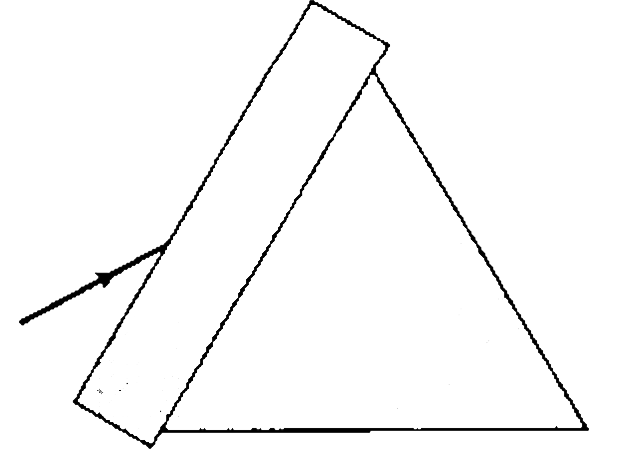 02:51View Solution
02:51View SolutionThe mirror of length L moves horizontally as shown in the figure with a velocity v. The mirror is illuminated bya point source of light 'P' placed on the ground. The rate at which the length of the light spot on the ground increases is :
 02:33View Solution
02:33View SolutionMonochromatic light rays parallel to x-axis strike a convex lens AB of refractive index `0.5`. If the lens oscillates such that AB tilts upto a small angle `theta` (in radian) on either side of y-axis, then find the distance between extreme positions of oscillating image:
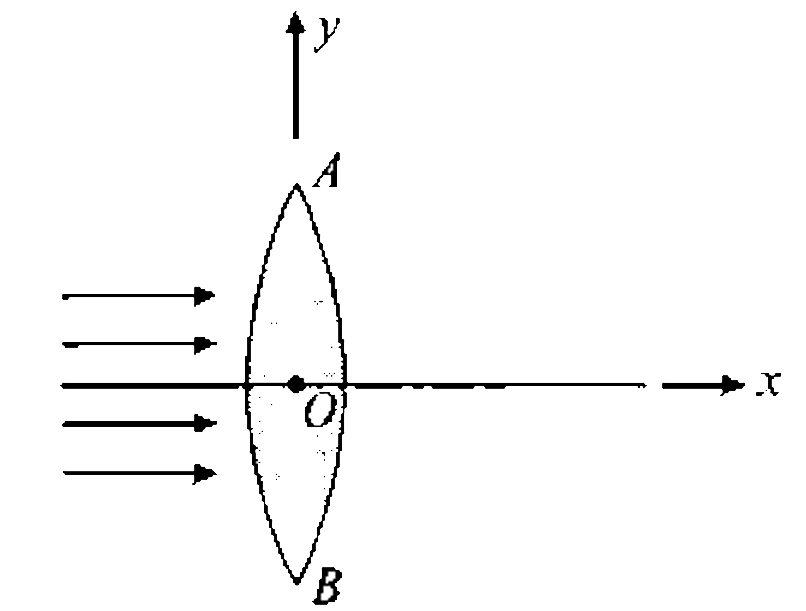 03:22View Solution
03:22View SolutionThe focal length of convex tens is `f` and the distance of an object from the principal focus is x. The ratio of the size of the real image to the size of the object is
03:15View SolutionA light ray gets reflected from a pair of mutually `_|_` mirrors, not necessarily along axes. The intersection point of mirrors is at origin. The incident light ray is along `y= x+2` . If the light ray strikes both mirrors in succession, then it may get reflected finally along the line:
02:31View SolutionA ray is incident on the first prism at an angle of incidence `53^(@)` as shown in the figure. The angle between side CA and B'A' for the net deviation by both the prisms to be double of the deviation produced by the first prism, will be:
 03:07View Solution
03:07View Solution
Conceptual MCQs Single Option Correct questions and complete solutions for chapter GEOMETRICAL OPTICS of GK PUBLICATIONS PHYSICS (HINGLISH) of Class 12
All Exercises from PHYSICS GALAXY Class 12 PHYSICS GEOMETRICAL OPTICS
- Advance MCQs with One or More Options Correct
- Conceptual MCQs Single Option Correct
- Discussion Question
- Illustrative Example
- Numerical MCQs Single Options Correct
- Practive Exercise 5.1
- Practive Exercise 5.2
- Practive Exercise 5.3
- Practive Exercise 5.4
- Practive Exercise 5.5
- Practive Exercise 5.6
- Practive Exercise 5.7
- Practive Exercise 5.8
- Practive Exercise 5.9
- Unsolved Numerical Problems
